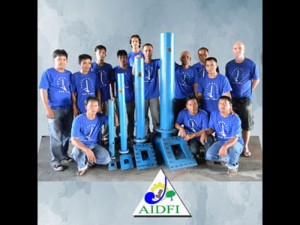Corporate News
Posted on August 28, 2011 09:57:19 PM
A FIRM planning to operate a fleet of electric buses has begun negotiating with banks to finance the importation of the vehicles into the country.
Green Frog Zero Emissions Transport will be tapping local banks for loans so it can bring in two buses before importing a second batch of 20 buses.
“Our buses will be arriving in batches. Our first batch of buses will be financed by a friendly forward-looking local private bank,” said Philip G. Apostol, managing director of Green Frog.
“[We are also] waiting for approval from PhilExim (Philippine Export-Import Credit Agency) for the loan guarantee for the next batch of buses,” Mr. Apostol added.
Together, “two banks will be tapped,” he explained.
He declined to specify the loan amount in the meantime, saying the firm is still negotiating with the bus supplier and the banks.
The company plans to import around 62 electric buses in four batches.
Of this, an initial 38 buses are planned to a portion of Makati City, mostly via Gil Puyat Ave.
The fleet is expected to be operational “before the end of 2012.”
The Energy department is pushing for the promotion of electric vehicles as part of its alternative fuels program for public transportation.
Already, the department has partnered with the Asian Development Bank (ADB) to provide electric tricycles to local government units.
The local government of Mandaluyong was the first city to be given electric tricycles.
Formally launched in 2008, Makati already has electric jeepneys servicing the city.
Power distributor Manila Electric Co. also expressed interest in putting up charging stations for electric vehicles.
Mr. Apostol went on to note that the company is importing the buses even in the absence of government incentives “that should jump-start the industry.”
“[The government] should help jump-start the industry by waiving import duties for CBUs (completely built up imported vehicles) and [providing] tax breaks for manufacturing,” he said.
Mr. Apostol said the manufacturing partner of Green Frog is “willing to discuss opening an assembly plant after local demand is proven.”
Green Frog is only one of the companies looking to roll out electric buses in the country.
Transportation firm Victory Liner, Inc. earlier announced its intention to run an initial 10 buses this year which will ply routes along the C-5 highway.
Victory Liner is also planning to build its own charging stations in its terminals so it can use electric buses for its provincial routes.
The firm has said, however, that its business plan will utimately depend on government’s direction.
The firm is seeking incentives to import its electric buses and have sought the help of the Climate Change Commission to provide suggestions for perks as each unit will cost the firm about P8 million to P8.5 million. -- Emilia Narni J. David
“Our buses will be arriving in batches. Our first batch of buses will be financed by a friendly forward-looking local private bank,” said Philip G. Apostol, managing director of Green Frog.
“[We are also] waiting for approval from PhilExim (Philippine Export-Import Credit Agency) for the loan guarantee for the next batch of buses,” Mr. Apostol added.
Together, “two banks will be tapped,” he explained.
He declined to specify the loan amount in the meantime, saying the firm is still negotiating with the bus supplier and the banks.
The company plans to import around 62 electric buses in four batches.
Of this, an initial 38 buses are planned to a portion of Makati City, mostly via Gil Puyat Ave.
The fleet is expected to be operational “before the end of 2012.”
The Energy department is pushing for the promotion of electric vehicles as part of its alternative fuels program for public transportation.
Already, the department has partnered with the Asian Development Bank (ADB) to provide electric tricycles to local government units.
The local government of Mandaluyong was the first city to be given electric tricycles.
Formally launched in 2008, Makati already has electric jeepneys servicing the city.
Power distributor Manila Electric Co. also expressed interest in putting up charging stations for electric vehicles.
Mr. Apostol went on to note that the company is importing the buses even in the absence of government incentives “that should jump-start the industry.”
“[The government] should help jump-start the industry by waiving import duties for CBUs (completely built up imported vehicles) and [providing] tax breaks for manufacturing,” he said.
Mr. Apostol said the manufacturing partner of Green Frog is “willing to discuss opening an assembly plant after local demand is proven.”
Green Frog is only one of the companies looking to roll out electric buses in the country.
Transportation firm Victory Liner, Inc. earlier announced its intention to run an initial 10 buses this year which will ply routes along the C-5 highway.
Victory Liner is also planning to build its own charging stations in its terminals so it can use electric buses for its provincial routes.
The firm has said, however, that its business plan will utimately depend on government’s direction.
The firm is seeking incentives to import its electric buses and have sought the help of the Climate Change Commission to provide suggestions for perks as each unit will cost the firm about P8 million to P8.5 million. -- Emilia Narni J. David

